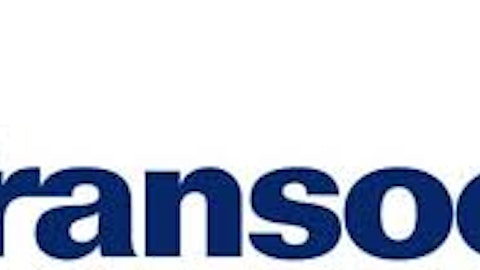ConocoPhillips (NYSE:COP), at a market capitalization of $70 billion, isn’t quite as large as the big names in oil & gas such as Exxon Mobil Corporation (NYSE:XOM) or BP plc (NYSE:BP), but it is still a major global integrated oil and gas company. It also spun out Phillips 66, which had previously operated ConocoPhillips’s downstream operations, earlier this year. While much of the focus on spinout situations in on the spun-out company, as the effects of greater management focus are strongest there, the same can be true to a lesser degree for the parent company which is now better able to focus on core operations.
In the third quarter of 2012, ConocoPhillips reported a 21% increase in income from continued operations compared to the third quarter of 2011 (net income and revenue were both down due to the spinout). Alaskan operations, while strong, were overtaken by APAC/Middle East and International (which includes Africa and Russia) geographies as sources of operating income.
ConocoPhillips’s trailing P/E is not particularly useful as it still includes some earnings from the operations that are now part of Philips 66. Wall Street analysts expect $5.80 per share in earnings for 2013, which implies a forward P/E multiple of 10. ConocoPhillips also pays a generous 4.6% dividend yield at current dividend levels and prices, having paid a 66 cent per share dividend consistently since February 2011 (including three payments so far after the spinout of Phillips 66). It’s a good pick for income investors, and as long as one isn’t strongly bearish on energy prices it may look like a good value stock as well.
Warren Buffett’s Berkshire Hathaway sold a small portion of its shares in ConocoPhillips during the second quarter, but as of the end of June the company was still Buffett’s energy stock of choice with Berkshire owning nearly 29 million shares. This gave the holding company over $1.6 billion in market value of the stock (find more stocks that Berkshire Hathaway had over $1 billion invested in). Jean-Marie Eveillard’s First Eagle Investment Management reported a position of 8.5 million shares, essentially unchanged from the beginning of April (see more stocks that First Eagle owned). AQR Management, which is managed by Cliff Asness, bought a small number of shares during the quarter and closed June with 1.3 million shares in the fund’s portfolio (research Cliff Asness’s favorite stocks).
ConocoPhillips is priced about in the middle of BP and Exxon Mobil on a forward earnings basis: those two peers carry forward P/Es of 8 and 11, respectively. BP is likely still seeing the market discount its stock price because of the Deepwater Horizon disaster and related legal concerns, but the company has been making progress in selling off assets and offers investors a dividend yield even with what ConocoPhillips pays. We’d say, however, that ConocoPhillips’s small premium is probably justified by the lower risk at the company. Exxon Mobil has a lower dividend yield, but is generally considered the market leader and has a very strong potential upside if natural gas prices improve thanks to its acquisition of XTO. It likely warrants a small premium to ConocoPhillips, and that’s what we currently see in the market so we can’t really recommend either stock relative to the other.
We can also compare ConocoPhillips to Chevron Corporation (NYSE:CVX) and TOTAL S.A. (NYSE:TOT). Total, at 7 times forward earnings estimates, has the lowest P/E of all of these peers on that basis. It has a high dividend yield on a trailing basis, but its payments tend to be inconsistent; in fact, each of the last three quarterly dividend payments has been lower than the one before. That’s something that should worry income investors. It does look interesting from a value perspective, but in the second quarter its earnings were sharply down from the same period in 2011. Chevron’s earnings decline over the same period was much more modest, and at a forward P/E of 9 it is priced very closely to ConocoPhillips. Chevron also has about three times ConocoPhillips’s market cap, with its equity valued at $216 billion.
We don’t think that there are any obvious pair trades among these oil majors: BP should have the lowest earnings multiple and it does, Exxon Mobil should have the highest earnings multiple and it does. Our preference would then be to take either Chevron or Exxon Mobil based on size and not being priced only slightly higher than their peers, though investors in ConocoPhillips- particularly if they place a strong emphasis on dividends- are probably getting a good deal as well.






